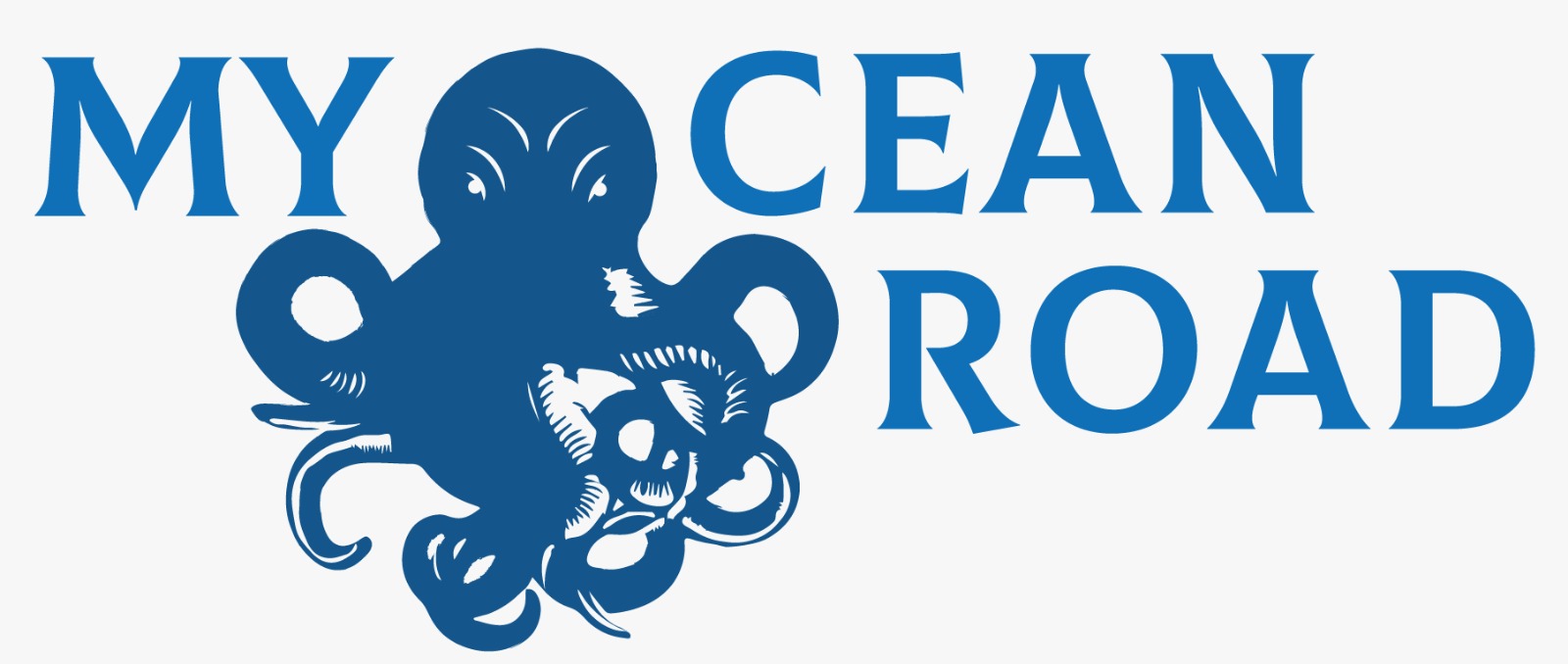The beach after the storm
I did not close an eye for the entire night. The strong wind kept howling through the numerous palm trees at our base camp situated only a couple of meters from the sandy beach. The same night was also baptised by some torrential rain which flooded the area for a short while. Some of the clothes that were hanging outside to dry, flew away and ended up either in the sand or in the bush. The sun made its first appearance for the day around quarter to seven. The wind was still blowing but not as strong as it was during the night. The team has been notified that the port was closed. That meant that sadly, there was no scuba diving for us for that day, so I decided to head to the village together with two other colleagues. The village is a thirty minute walk along the sandy beach from our base camp. Had a quick breakfast, showered and headed towards the village.
The long stretch of golden sandy beach transformed into a dark brown carpet of algae that was washed up by the waves during the night. Although it was still windy, it was still pleasant to walk on the beach. However after a couple of steps we witnessed things that left the three of us in an awe.
Entangled within the algae and submerged in the sand, we saw different types of debris and in large quantities. Every new step was a new discovery. The debris list was endless:
Plastic bottle caps
Plastic bottles
Take-away polystyrene packaging
Cigarette Plastic Lighters
Shoes
Buckets
Plastic bags
Parts of plastic containers
Clothes
Pieces of ropes
Wooden planks
Rubber tyres
Condoms
Rubber Tubes
Plastic straws
Fishing gear
Plastic cutlery
Glass bottles
A Phone
Large number of small fragmented plastic debris
We’ve seen all this in only a hundred meter span of the beach. We started picking up each item one-by-one. We did not have enough bags to collect the debris. We headed back to the base and got more bags and more help. In an hour we managed to fill up five large trash bags. We separated the debris by material and prepared them for collection. We even documented what we collected on an international website.
All that debris was out there in the ocean before it got washed up on the beach. Every single piece is a threat for marine life and sea birds. This debris is easily mistaken for food and is digested by the animals that can lead them to their death. How many more dead whales do we want to witness washed ashore? How many shearwaters do we want to suffocate? This is serious and is common on all beaches throughout the planet. We are gradually destroying our planet. This is a blindfolded suicide.
There is a big chance that the fish we are cooking and eating have the same micro plastic that we are dumping in our ocean. Do you like that? I guess not.
Every individual can make a difference. We have enough brains and resources to design and manufacture alternative eco-friendly materials. Educate communities from the young to the old. The ocean is not a dumping site. The ocean keeps up alive. We are suffocating the ocean. We our suffocating our children. When you go to a grocery store, avoid using plastic bags and take your own reusable bag. Do not purchase plastic food containers but use your own. Avoid shopping from outlets that are not eco-friendly. A lot can be done at home and at work. So do it. Make a difference.
Let’s make our ocean clean again.
